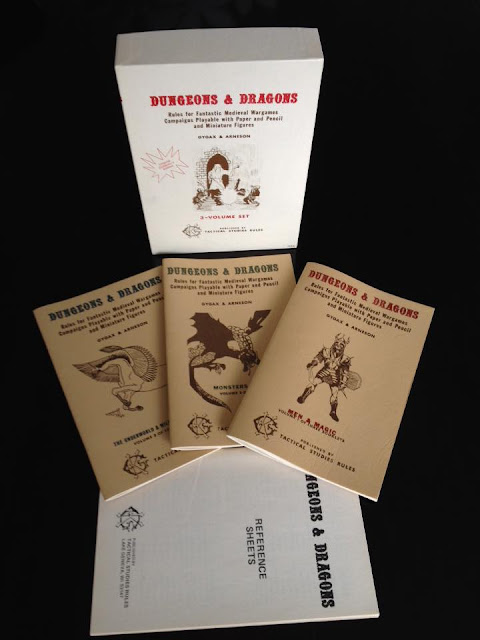A new class: the Cacozealot. This class was written for OD&D, however it is entirely useable with Labyrinth Lord, or Swords & Wizardry (Moldvay etc.). If you are using Swords & Wizardry's ascending armour class system, simply deduct 1 from the listen armour class values. For example, 11 would be 10. Simple.
This class was developed when one of my players wanted to play a winged demonic fey. He linked me to the 3.5 fey'ri (mixture of elven and demon). He liked the idea of a monkish character also. With these as a guideline I developed the Cacozealot. This class has many Arnesonian (is that right?) features, taken from the Blackmoor supplement. In addition, they have the dark twist of growing leathery wings, claws, or a barbed tail, as their devotion to the fiends of the underworld grows to fruition.
Hope you enjoy.
Note: this has not been playtested yet, so any feedback you have would be valuable. I have considered bumping up the hit dice, but have not made up my mind.
Cacozealot
The putrid blood of the underworld courses
through the veins of the Cacozealot. They are offspring, devotees, and
dervishes of demons, imps, and other unwholesome beings. Initially, the
Cacozealot is weak, but over time their minds and bodies become warped through
their chaotic dabbling. Some grow claws, fangs, barbed tails, and even wings.
Whether this is genetically endowed, or whether the disciple gains these powers
through meticulous dark devotion, depends on the zealot. It is not uncommon for
the Cacozealot to be a “half-blood”, born of a malignant spirit’s interference
with humanity.
Prime
Requisite: Wisdom.
Alignment: Chaotic.
Fighting,
Hit Dice, & Saves: The Cacozealot
fights and saves as a Cleric of the same level. They progress in hit dice as a
Magic-user.
Bonus
Experience Points: A Cacozealot
with 13+ wisdom receives a 5% bonus to any experience points earned, while those
with 15 or above receive a 10% bonus to any experience points earned.
Equipment
& Armour: Cacozealots cannot use
armour and shields. They may use any weapon. Many choose to fight unarmed
however, as they possess an unnatural strength and speed as they gain levels.
During character creation Cacozealots
may subtract 2 points of charisma or 1 point of intelligence in exchange for
adding 1 extra point to their raw wisdom score. This may be repeated as many
times as desired but these lowered scores must not drop below 9.
Experience:
The following table illustrates the
experience point progression for each level.
Level
|
Title
|
Experience
Points*
|
Unarmed
Damage**
|
Damage
Reduction
|
Armour
Class
|
Speed
|
1
|
Deviant
|
0
|
1d4
|
1
|
9
(11)
|
12”
(40’)
|
2
|
Scourge
|
2,500
|
1d6
|
8
(12)
|
||
3
|
Fiend
|
5,000
|
1d8
|
2
|
7
(13)
|
|
4
|
Demonkin
|
10,000
|
2d4
|
6
(14)
|
15”
(50’)
|
|
5
|
Demonologist
|
25,000
|
1d10
|
3
|
5
(15)
|
|
6
|
Infernalist
|
50,000
|
1d12
|
4
(16)
|
||
7
|
Demonmancer
|
100,000
|
2d6
|
4
|
3
(17)
|
18”
(60’)
|
8
|
Low
Cacozealot
|
200,000
|
3d4
|
2
(18)
|
||
9
|
Cacozealot
|
300,000
|
2d8
|
5
|
||
10
|
High Cacozealot
|
450,000
|
2d10
|
21”
(80’)
|
* Each additional level above 10
requires an additional 150,000 xp.
** If playing 3lbbs, use the extra
damage rule under “Demonhide” as a replacement for unarmed damage.
Abilities:
Unarmed
Damage: The Cacozealot is a weakling, yet over
time they may grow very powerful as their soul becomes increasingly corrupted
and warped. The table above indicates the damage a Cacozealot will deal if they
are using no weapons. “Unarmed” can mean hands, knees, elbows, headbutts, etc.
Additionally, if the Cacozealot rolls 18-20 on an unarmed attack roll
(unmodified) they have a 50% chance of stunning their victim for 1d4 rounds. If
a 20 is rolled on an attack dice (unmodified), there is a 25% chance of killing
the victim outright.
Demonhide
(Damage Reduction & Armour Class): The
Cacozealot’s skin appears sickly and deformed. It may thicken like the hide of
a reptile or beast, and they have a preternatural ability to avoid blows. When
damage is dealt to the Cacozealot some is absorbed by their grotesque skin, and
by the unwholesome fortune of their bloodline. Optionally, if a weapon is being
employed (rather than going unarmed), the Cacozealot receives their Damage
Reduction in the form of bonus damage (on a successful hit). For example, a 3rd
level Cacozealot (Fiend) would receive a +2 damage bonus on a successful hit.
Skills
Chart:
Cacozealots have a preternatural
ability to move silently and avoid detection. These abilities are resolved by
rolling 1d6. Success is indicated when the number on the dice equals, or is
less than, the number listed on the chart below.
Levels
|
Move
Silently
|
Hide
in Shadows
|
1-3
|
1
|
1
|
4-6
|
2
|
2
|
7-9
|
4
|
3
|
10+
|
6
|
5
|
Bodily
Corruption: At 5th level
the Cacozealot’s body becomes even more depraved and mutilated. Roll 1d6 on the
table below:
1d6
Result
|
Corruption
|
Effect
|
1-2
|
Claws
|
+1
bonus to unarmed damage.
|
3-4
|
Barbed
Tail
|
Tail
whip deals 1d6 damage.
|
5-6
|
Leathery
Wings
|
Cacozealot
can
fly.
|
This corruption can be disguised at
the whim of the Cacozealot. Only a 10% chance exists for being detected,
although magical spells can bypass this deception entirely.
Speed:
The Cacozealot is supernaturally fast.
Their speed increases as they become more powerful. Winged Cacozealots can fly
at their listed movement speed.






